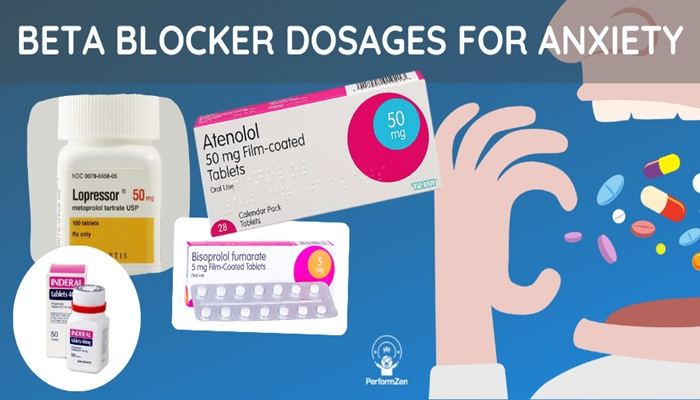Beta blockers are a class of medications widely prescribed for various cardiovascular conditions, including hypertension, angina, arrhythmias, and heart failure. While effective in managing these conditions, beta blockers have been associated with several metabolic side effects, including hyperlipidemia. Hyperlipidemia refers to elevated levels of lipids (fats) in the blood, primarily cholesterol and triglycerides. This article explores the mechanisms by which beta blockers can lead to hyperlipidemia, the clinical implications of this side effect, and potential management strategies.
Mechanisms of Hyperlipidemia Induced by Beta Blockers
1. Decreased Lipolysis
Beta blockers inhibit the action of catecholamines (adrenaline and noradrenaline) on beta-adrenergic receptors. One of the roles of catecholamines is to stimulate lipolysis, the process by which triglycerides are broken down into free fatty acids and glycerol. By blocking beta-adrenergic receptors, beta blockers reduce lipolysis, leading to an accumulation of triglycerides in adipose tissue and subsequent hyperlipidemia.
2. Reduced Hepatic Lipoprotein Lipase Activity
Lipoprotein lipase (LPL) is an enzyme crucial for the hydrolysis of triglycerides in lipoproteins, such as very low-density lipoprotein (VLDL) and chylomicrons. Beta blockers can reduce the activity of LPL, leading to decreased clearance of triglyceride-rich lipoproteins from the bloodstream. This results in elevated levels of triglycerides and VLDL, contributing to hyperlipidemia.
SEE ALSO: The 7 Best Ways to Reduce Hyperlipidemia
3. Increased VLDL Production
The liver plays a central role in lipid metabolism, including the production of VLDL. Beta blockers have been shown to increase the hepatic synthesis and secretion of VLDL. Elevated VLDL levels lead to an increase in the levels of low-density lipoprotein (LDL) cholesterol, commonly known as “bad” cholesterol, which is a major risk factor for atherosclerosis and cardiovascular disease.
4. Altered Insulin Sensitivity
Beta blockers can impair insulin sensitivity, a condition known as insulin resistance. Insulin resistance is associated with various metabolic disturbances, including dyslipidemia. When insulin sensitivity is reduced, the liver produces more VLDL, and the clearance of triglycerides is diminished. This contributes to higher circulating levels of triglycerides and LDL cholesterol.
5. Changes in HDL Cholesterol
High-density lipoprotein (HDL) cholesterol, known as “good” cholesterol, helps remove excess cholesterol from the bloodstream and protects against cardiovascular disease. Some beta blockers, particularly non-selective ones, have been associated with a reduction in HDL cholesterol levels. A lower HDL level diminishes its protective role and contributes to an unfavorable lipid profile.
Clinical Implications of Beta Blocker-Induced Hyperlipidemia
1. Increased Cardiovascular Risk
Hyperlipidemia is a well-established risk factor for cardiovascular disease, including coronary artery disease, stroke, and peripheral artery disease. The increase in LDL cholesterol and triglycerides, coupled with a decrease in HDL cholesterol, can accelerate the development of atherosclerosis. Patients on beta blockers who develop hyperlipidemia may have an elevated risk of cardiovascular events.
2. Impact on Diabetes Management
Patients with diabetes are often prescribed beta blockers for hypertension or cardiovascular protection. However, beta blocker-induced hyperlipidemia can complicate diabetes management. Dyslipidemia is a common comorbidity in diabetes, and additional lipid abnormalities can increase the risk of macrovascular complications. Careful monitoring and management of lipid levels are essential in these patients.
3. Adverse Effects on Metabolic Syndrome
Metabolic syndrome is a cluster of conditions, including central obesity, insulin resistance, hypertension, and dyslipidemia, that increase the risk of cardiovascular disease and type 2 diabetes. Beta blocker-induced hyperlipidemia can exacerbate the dyslipidemia component of metabolic syndrome, contributing to an overall higher risk profile.
Management Strategies for Beta Blocker-Induced Hyperlipidemia
1. Lifestyle Modifications
Lifestyle changes are the first line of defense against hyperlipidemia. Patients on beta blockers should be encouraged to adopt heart-healthy habits, including:
Diet: Consuming a diet low in saturated fats and cholesterol, rich in fruits, vegetables, whole grains, and healthy fats (such as those found in fish, nuts, and olive oil).
Exercise: Engaging in regular physical activity, such as brisk walking, swimming, or cycling, for at least 150 minutes per week.
Weight Management: Achieving and maintaining a healthy weight can improve lipid profiles and reduce cardiovascular risk.
2. Pharmacological Interventions
When lifestyle modifications are insufficient to control hyperlipidemia, pharmacological interventions may be necessary.
Options include:
Statins: These are the most commonly prescribed drugs for lowering LDL cholesterol. They work by inhibiting the enzyme HMG-CoA reductase, which is involved in cholesterol synthesis in the liver.
Fibrates: These medications are effective in lowering triglycerides and, to a lesser extent, increasing HDL cholesterol.
Niacin: Also known as vitamin B3, niacin can help reduce triglycerides and LDL cholesterol while increasing HDL cholesterol.
Omega-3 Fatty Acids: These supplements, often derived from fish oil, can help lower triglyceride levels.
3. Selecting Beta Blockers with Favorable Metabolic Profiles
Not all beta blockers have the same propensity to cause hyperlipidemia. Cardioselective beta blockers, such as metoprolol and atenolol, are less likely to affect lipid metabolism compared to non-selective beta blockers, like propranolol. Choosing a beta blocker with a more favorable metabolic profile may mitigate the risk of hyperlipidemia.
4. Regular Monitoring and Follow-Up
Patients on beta blockers should undergo regular monitoring of their lipid profiles. This includes periodic blood tests to measure total cholesterol, LDL cholesterol, HDL cholesterol, and triglycerides.
Regular follow-up appointments allow healthcare providers to assess the effectiveness of interventions and make necessary adjustments to treatment plans.
Conclusion
Beta blockers are essential medications for managing various cardiovascular conditions, but they can have significant metabolic side effects, including hyperlipidemia. Understanding the mechanisms by which beta blockers cause hyperlipidemia is crucial for clinicians to manage and mitigate this risk. Through lifestyle modifications, pharmacological interventions, careful selection of beta blockers, and regular monitoring, healthcare providers can help patients maintain a healthy lipid profile and reduce the risk of cardiovascular disease.

